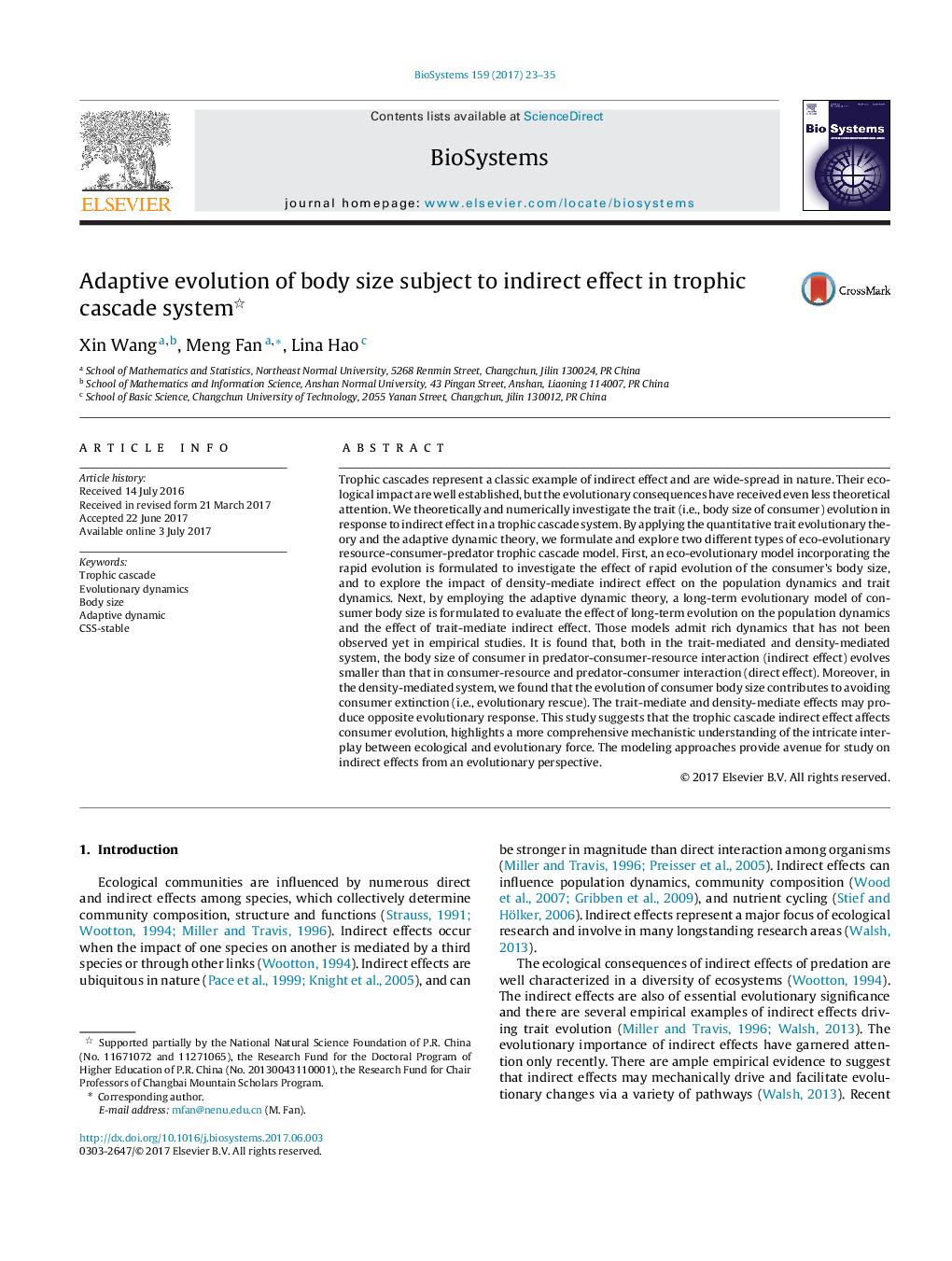| Article ID | Journal | Published Year | Pages | File Type |
|---|---|---|---|---|
| 5520625 | Biosystems | 2017 | 13 Pages |
Trophic cascades represent a classic example of indirect effect and are wide-spread in nature. Their ecological impact are well established, but the evolutionary consequences have received even less theoretical attention. We theoretically and numerically investigate the trait (i.e., body size of consumer) evolution in response to indirect effect in a trophic cascade system. By applying the quantitative trait evolutionary theory and the adaptive dynamic theory, we formulate and explore two different types of eco-evolutionary resource-consumer-predator trophic cascade model. First, an eco-evolutionary model incorporating the rapid evolution is formulated to investigate the effect of rapid evolution of the consumer's body size, and to explore the impact of density-mediate indirect effect on the population dynamics and trait dynamics. Next, by employing the adaptive dynamic theory, a long-term evolutionary model of consumer body size is formulated to evaluate the effect of long-term evolution on the population dynamics and the effect of trait-mediate indirect effect. Those models admit rich dynamics that has not been observed yet in empirical studies. It is found that, both in the trait-mediated and density-mediated system, the body size of consumer in predator-consumer-resource interaction (indirect effect) evolves smaller than that in consumer-resource and predator-consumer interaction (direct effect). Moreover, in the density-mediated system, we found that the evolution of consumer body size contributes to avoiding consumer extinction (i.e., evolutionary rescue). The trait-mediate and density-mediate effects may produce opposite evolutionary response. This study suggests that the trophic cascade indirect effect affects consumer evolution, highlights a more comprehensive mechanistic understanding of the intricate interplay between ecological and evolutionary force. The modeling approaches provide avenue for study on indirect effects from an evolutionary perspective.
